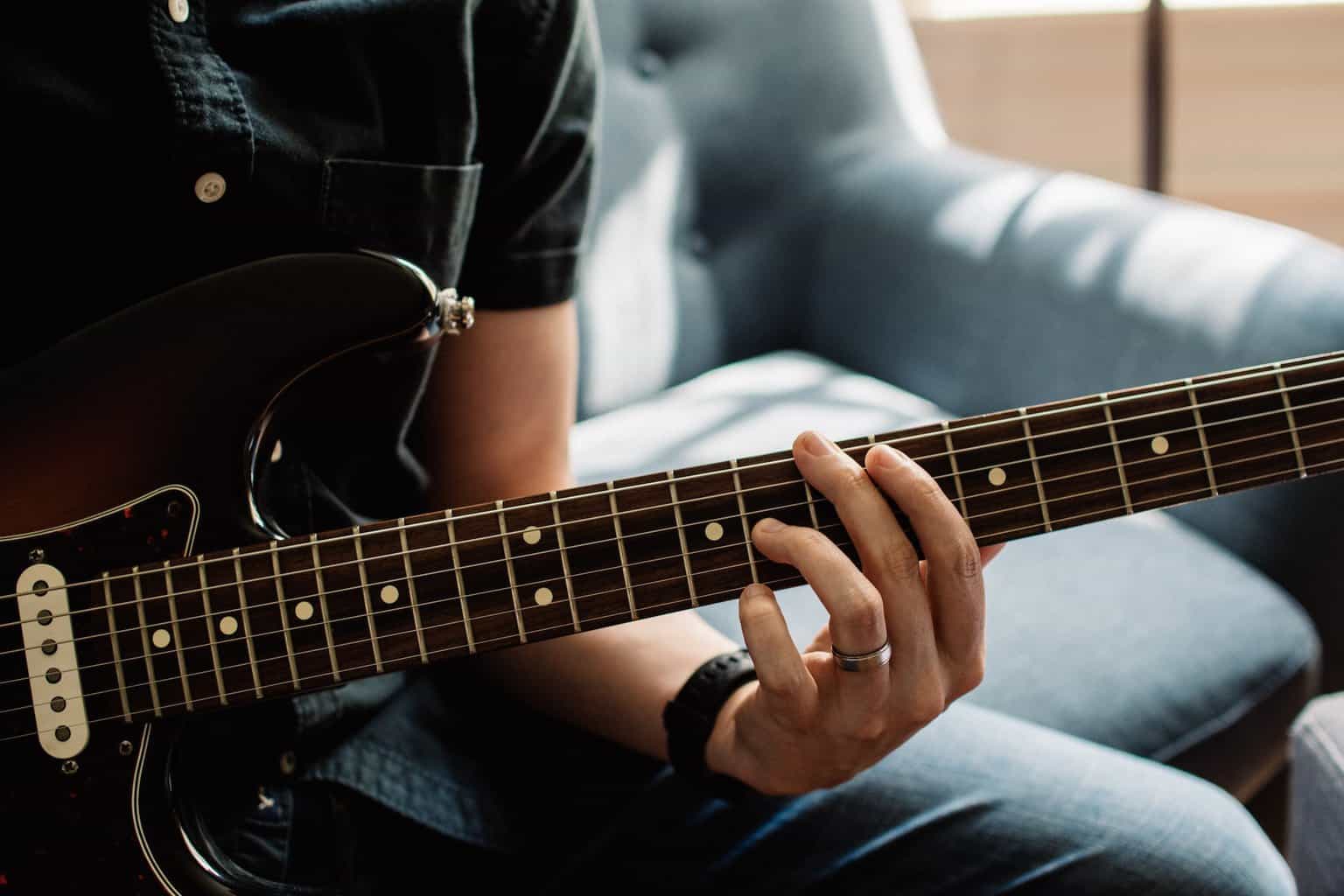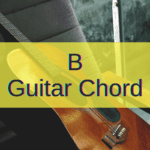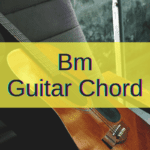The guitar is an instrument that most of us learn visually. Yes, we go from chords to scales to licks to chord progressions and it’s always about shapes and boxes.
What happens if I tell you that I broke the code? That I was finally set free from all the limitations the guitar fretboard proposes?
Well, that came as soon as I was able to successfully remember and recall the entire fretboard note by note. In this piece, I’m going to try my best to pass that knowledge on to you.
To memorize the fretboard fast you should learn the notes like an alphabet, remove sharps and flats, and learn the half-tone moves between them. After that, you can also use octaves and other intervals, note grouping, the CAGED system, and the pentatonic scale across the neck.
Well, are you ready to break the code and come out of the Matrix yourself? This is it, the moment you meet Morpheus and see how deep the rabbit hole is.
So, keep on reading and you’ll go deep into proven, road-tested tips that will help you memorize the fretboard faster than you ever expected.
There’s a whole new world of guitar playing waiting for you just some paragraphs away.
Should you really memorize the fretboard to play guitar?
The answer to this question is radically no; you don’t need to memorize the fretboard to be a guitarist.
That being said, you don’t need to learn any specific skill to play guitar, but you become a better guitarist the more techniques you know.
For example, when you learn barre chords, you unlock a whole new universe of playing.
Likewise, the first time you play the pentatonic scale over a set of chords, you feel like you’ve unlocked a new path.
Well, that is because all of them are little steps toward a bigger goal, which is mastering the instrument. In that sense, the moment you can recall any note of the fretboard, you’ll be several steps closer to being an overall better guitar player.
It is one of those skills that unlock an avalanche of other skills and makes some others much easier to understand.
Well, to cut a long story short, we can say that, although not necessary to become a guitar player, memorizing the fretboard will definitely make you a better guitarist.
5 Advantages of knowing the notes in a guitar fretboard
I just chose a handful of my favorite advantages for those who venture in understanding the fretboard better.
Yet, this is not by any means an exhaustive list of all the benefits of memorizing the guitar fretboard.
Furthermore, it is safe to say that the more you play and the more you understand the guitar, the more benefits you’ll experience.
1. Find Barre Chords Easier
We all know and love barre chords. You only need to memorize a few shapes and you can make virtually any chord you need.
But how does memorizing the fretboard help me with my barre chords?
Well, very simple: if you know your root notes, especially on your 5th and 6th string, you’ll be able to play any barre chord in a heartbeat when you need it.
This can be a great help when you’re learning new material or playing along with someone else because you can make changes easily and quickly.
Furthermore, for all the rockers out there, this extends to power chords. Yes, as long as you know every note in the top strings, you can play any power chord you need whenever you need it.
2. Build Any Chord Anywhere Anytime
Chords, as you might know, are made of a combination of notes. These notes, as you might also know, are repeated in every string of the guitar.
Why is this important? Well, because this plethora of locations for the same notes gives you virtually endless possibilities to build chords anywhere you need.
Yes, for example, if you know that C, G, and E make the C major chord, you can play a C major chord anywhere you have those three notes within range.
By range, I mean that we, guitar players, are constricted by the reach of our fingers.
Therefore, if it is doable, if your fingers can fret the three notes at once, you can play any chord anywhere.
It all sounds beautiful until you realize you have no idea where C, G, and E can be found after the third fret.
That’s where knowing the fretboard by heart comes in to save the day; the faster you identify the notes, the closer you’ll be to playing any chord anywhere anytime.
3. Understand Scales More Profoundly
Scales on their own are a great step forward in guitar playing, yet, they can be a constrictive technique because they show you how to move around the fretboard utilizing boxes.
Again, to break the repetitive Matrix, to break the mold, what you need to do is to understand what the relationship of the notes within the scale is.
To learn this, you have to be able to navigate your way through the fretboard confidently.
For example, if you want to understand which notes of the scale you’re playing should be passing notes and which should be the ones you put the emphasis on, you can locate the scale’s root, IV, and V degrees, and play with them.
Moreover, beyond that, you can also play the right scale when you understand the relationship it has with the underlying chords.
For example, the good use of modulation can change a solo into a much more colorful landscape than just playing it on a scale that matches the song’s key.
4. Improvise Like the Great
Speaking about the ability to move from one scale to another at the right moment to modulate over the chord structure successfully; that’s exactly what the greats do when improvising.
But wait, even if you know the scales you want to modulate back and forth, you need to know where to find those pivotal notes that will take you there.
Again, some superheroes wear capes, and some don’t; this is another moment memorizing the fretboard saves the day. If you know where those notes are, you can always find them and pivot from one key to another.
Furthermore, if we go back to the idea of forming chords everywhere, knowing the notes that make a certain chord allows you to just play them to move from chord to chord without even knowing the scale.
5. Discover the Invisible Links between Base and Solo
Improvisation is one thing and soloing is another. Yes, while improvisation condenses the mood of the moment, soloing requires careful planning and designing to bring the wow factor.
We could divide the limitless number of solos being played everywhere in the world into two big groups: those who play for the song and those who play against the song.
In the first category, we can include the most epic solos in the greatest rock ballads and unforgettable guitar moments in guitar history. On the other, we can put all the rest.
Yes, understanding the base is paramount to being a better soloist.
How so? Well, the more you understand the invisible links between the notes you’re playing and the notes being played by the rest of the band, the more accurately, you’ll be able to plan your melody.
Unfailingly, a better understanding of why notes sound great where they do requires you to know where to find them on the fretboard.
This will also lead to playing better-planned solos with more resources and accuracy.
Yes, knowing the fretboard by heart will help you find that melody you look for and make it an inseparable part of the song.
12 tips to memorize the fretboard
Now that you know why you should memorize the fretboard, it is time we address the elephant in the room and show you how to do it.
These 12 tips are the outcome of decades of playing the guitar professionally and teaching countless students. They are road-tested, proven tips that have helped many people find their way around the fretboard faster.
Therefore, use these tips a lot until you master the ability to navigate the fretboard by heart.
Without further ado, let’s do this!
1. Notes are an Alphabet
The notes can be arranged as the letters of the alphabet starting from A and going all the way to G.
Yes, the notes follow one another just in the order of our alphabet, which we learn when we are about 6 years old.
So, once you’ve located the A in each of the strings, you know that you’ll find B moving toward the bridge and G moving toward the nut.
The same if you find, for example, D; you know that E is the next note toward the bridge and C is the next toward the nut.
Exercise 1
To practice this alphabetical quality of our notes, you can practice this very simple exercise: Locate all the letters in each of the strings and write them down with string and fret numbers.
When you finish, you’ll have something like this:
- A: 6, 5
- B: 6, 7
- C: 6, 8
The letter is the note name, the first number is the string and the following is the fret number. Do this for all the notes in every string.
I know, it’s tiring, but for those of us who have a visual memory, it can be super handy.
Exercise 2
Let’s play battleship! Well, not quite a battleship game, but let’s test our knowledge using a similar idea.
Using the grid you’ve just created, you just need to say a string and a fret number and name the note in that combination.
Having someone to help you with it makes it much more fun!
2. Use the Barre Chord Strings First
We already established our unconditional love for barre chords and all the beautiful things they facilitate when we play.
So, a great way to begin learning the name of all the notes on the fretboard is to start with the strings we use more often for barre chords: the 6th and the 5th.
As you might already know, the 6th string, when played open, will give you an E in standard tuning.
As you might also know already, the 5th string will give you an A in the same conditions.
So, from these notes, you can start building your knowledge following the string like the alphabet going from the nut toward the bridge.
If it works better for you, feel free to write down the notes you’re finding and put together every barre chord as you move along.
As a pro tip, the dots your guitar might have at the 3rd, 5th, 7th, 9th, and 12th frets are very useful, especially for these two strings.
3. Remove Sharps and Flats
Speaking of the markers in your guitar, learning all the notes on the fretboard is almost impossible if you also count the sharps and flats.
So, instead of memorizing each, we’ll memorize the one rule that applies to them all.
Perhaps, the perfect way to explain sharps and flats is to think of the keyboard in a piano. Have you ever noticed they have white keys and also black keys?
Well, the black keys are the sharps and flats between the notes.
So, for example, if you’re going from G to A, you have one note in the middle: G# (G sharp). This note is the black key in the piano between the G and the A white keys.
The G sharp is one semi-tone above G and one semitone below A.
That same rule applies to the guitar; a semi-tone is one fret while a whole tone is two frets.
So, if we know this rule, we no longer have to remember sharps and flats, we only have to remember the notes of the alphabet.
Then, when someone tells you a “sharp” you know you have to find the note and move one fret toward the bridge and one fret toward the nut for “flat”.
Finally, the difference between a sharp and a flat note brings confusion in the minds of some players. For example, what is the difference between G# (G sharp) and Ab (A flat)?
The difference is only the way they are called because both symbols refer to the same note. In a standard tuning guitar, you can find that note in the fourth fret of the 6th string.
4. Remember only the Half-tone Moves
The above rules have an exception because some notes don’t have any flats or sharps between them. Yes, we’re talking about the movement from E to F and from B to C.
In simpler words, you can’t play E# because it is F. Likewise, there’s no such thing as B# because it is C.
Technically, nobody will ever tell you to play a B# because it doesn’t exist.
Also, the movement between E and F and between B and C takes only one fret.
So, a great way to memorize the fretboard is by learning only these half-tone moves and thinking of all the rest as being two frets away.
Believe me; once you know exactly where the half-tone distances are, everything becomes easier.
To practice this, the best way to do it is to find the places on the fretboard where these smaller changes occur and memorize only those.
Then, just apply the rule of the exception: everything else takes two frets until the next natural note.
5. The Open Position is Basic
The first three frets of your fretboard are basic and paramount because there you can find the majority of the chords in the open position.
As you might know, open chords are one of the foundational stones of our life as guitar players. Yes, they are very likely the first ones we learn and might also be the ones we play the most.
In some cases, they have been the secret sauce to stadium sing-alongs like it happened with Oasis, for example.
So, try to learn all the notes in the six strings in the first three frets. Then, you can expand to the next two and have properly memorized the first five frets in every string.
That way, you’ll know how to create a plethora of chords and what notes to play on them. For example, in the open position, you can find most major, minor, minor seventh, and seventh chords.
If you know what notes make the chords, you’ll be one step ahead of the rest knowing what notes to play over those chords.
So, focus on the open position and you’ll very likely cover 70% of your playing.
6. Use the Octaves
We are going to talk about using the octaves in two different ways.
The first one is about the repetition of the notes. Yes, all the notes you have in the first 12 frets are then repeated on the following frets (duplicated if your guitar covers two octaves).
Most electric guitars have up to two octaves of notes going all the way to 24 frets. If you ever wondered why your guitar has two dots in the 12th fret instead of one, it is because that’s where it all starts again.
Therefore, if you play the fourth string open and then play it fretting the 12th fret, you get the same note. Likewise, fretting the fourth string at the 15th fret and doing it at the 3rd fret should give you the same note.
So, that’s the first good news: you only have to memorize half the fretboard because the other half repeats.
What’s the second good news on this item?
Well, the same note repeats two strings below, two frets toward the bridge of the guitar.
Wait? What? That sounds like a lot of difficult mumbo jumbo!
Well, it actually is not. Let me explain.
Do you know how to play power chords? Well, power chords are also known as fifths.
This is simply because the chord is made with only two notes: the root and its fifth.
Therefore, for example, the G power chord looks like this.

A common move is to thicken this two-string chord by adding another note, a repeated one; its octave. This way, you’re not adding any other flavor to the chord but making it thicker-sounding.
It looks something like this:

What happens if we remove the 5th and just leave the octaves? Well, the only effort you must make is to silence the middle string with your ring finger or your index finger.
It looks something like this:

But why is all of this important? Well, very simple, because it is a great way to find notes around the fretboard. For example, if you know that the third fret of the 6th string is G, then the fifth fret of the 4th string is G as well.
Bear in mind that it all changes when you talk about the relationship between the fourth and second strings. In that case, octaves look more like this:
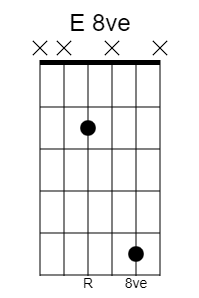
This can be very useful to map out the notes on the fretboard and makes a great way of memorizing octaves where they repeat.
Furthermore, just by playing octaves in this shape, you can come up with a nice melody and use these two-note simple chords to create a sound much bigger than the sum of the parts.
7. Sing the Notes
I know what you’re thinking, but no, you don’t need to be a singer to be successful at this item on the list.
You don’t need to “sound great” as you’re saying “G sharp” out loud.
But then, why sing the notes if playing them is hard enough? Well, because a multilayered approach is always more effective when learning a new skill.
Yes, the fact that you are singing them while you play them gives your brain something to associate it with.
This is a rule of nature, if you use one method to learn something, it will be harder than when utilizing two methods.
Therefore, if you add the singing to the playing, the chances of remembering that note double.
Hence, the exercise for this tip is as simple as singing every note that you play.
It might prove to be a tad hard at the beginning, but if you keep on practicing, there will be a moment in which your brain will do it for you.
Finally, you might even practice two skills at once if you are interested in pursuing a career as a singer too. Who knows, maybe you’ll discover a singer inside of you!
8. Apply to All Practice Routines
This is a tip that has helped me a lot as a professional player. I apply the note-per-note approach to each of my routines and learn everything I play note by note.
Yet, I’m not a next-level genius or anything remotely close to that. What I have is a long mileage on my guitar-playing skills.
Suddenly, your brain will start doing it for you and before you know it, you’re breaking down everything you play into notes. Furthermore, you might even be singing every note you play!
It’s just like riding a bicycle, or learning barre chords; once you’ve mastered the technique and practiced long enough, it’ll feel natural.
So, apply it to all practicing routines and speed up the process!
9. Learn the Notes Horizontally Per String
This is a very good approach to start your understanding of the fretboard slowly and grow your familiarity with the notes little by little.
The idea is very basic, what you have to do is memorize the notes of every string horizontally. But, how exactly will you memorize these notes?
Well, let’s put it into exercise form:
Exercise 1
Let’s use the D or 4th string for this exercise. Let’s find all the notes and play them up and back down.

For this version of the exercise, we’re just playing the natural notes without thinking of sharps and flats. Feel free to add them if you want to, though.
Exercise 2
Now that you’ve learned them following the right order, let’s test your memory a little further. Try playing exercise 2 as you sing every note.
The proposed time is 80bpm but you can slow down or speed up that time as much as you want and need.

Exercise 3
This is the final exercise of the series. We’re going to go all the way up from 0 to 12 on the D string and then go back from 12 to 0 on the A string.
You should practice this exercise on every string of the fretboard until you’ve gone up and down every string. Once you’ve done it one way around, try the opposite.
Again, the suggested bpm is 80 but you can change it to whatever you want and need.

10. Note Grouping
We have a great ability just for being humans: we can process knowledge in chunks. Yes, this concept is not actually something I came up with but the outcome of several studies that certify that humans digest information better in chunks.
So, we are going to go with the flow of the scientific community and do our own part in chunking information. What we’ll chunk is notes so we can learn the fretboard better and faster.
The first thing we need to do for this tip is to divide the natural notes into two groups.
- CDE
- FGAB
These are not random groups; on the contrary, note that there is never a distance lower than a whole tone (2 frets on the guitar) between the group members.
To move from group to group, you have to break that rule and go from E to F or from B to C.
But why is this important and how can this mumbo jumbo help you memorize the fretboard faster?
Well, the good thing is that you can find these chunks of notes around the fretboard and all you need to memorize is where each group starts and you’ll be on your way.
But that’s not the only good news, because these groups define the very core of the fretboard, and as soon as you figure out where they are, it will feel like a shortcut.

11. Let’s Talk About the CAGED System
Perhaps, you’ve heard people talk about the famous, utterly famous CAGED system.
Yes, it sounds like the secret gadget Batman is taking out of his bat belt, but it is actually an acronym. It is made of exactly those chords, C, A, G, E, and D.
Let’s begin by saying that the entire CAGED system is based around those open chords. So, to understand this system, it is paramount that you know them already.
These basic chords are going to be not only the map for the entire fretboard but also a perfect way of building a plethora of other chords wherever you want.
Even more importantly, once you understand how the different chords connect, you’ll be able to name every note on the fretboard easier.
So, let’s take a look at the CAGED chords:


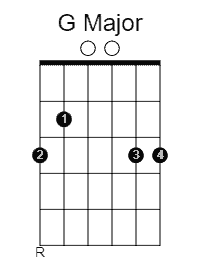


Now, with these five chords, we’re going to create other chords. We’re going to turn these simple shapes into something much more powerful than themselves: their CAGED version.
We created different chords utilizing the same shapes and moving them up.
They look like this:

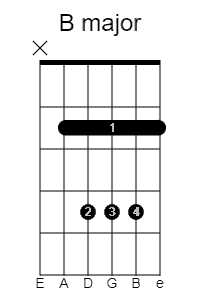



Now is when it really gets interesting since you can not only use this information to create a plethora of chords, there is another reason why the system is called the CAGED system.
The reason is that you can follow the name of the chords and cover the entire fretboard with the same shapes.
If you start with the C shape, you can then form an A shape, then a G shape, and so on. This will form a chain with the notes that both chords share.

You can cover the entire fretboard knowing the notes you’re playing in each of the CAGED chords. With time and practice, it will definitely help you memorize the fretboard much faster.
Plus, as a positive side effect, you’ll also gain the ability to create more chords and play more correct notes across the fretboard.
Furthermore, the CAGED system is a framework that can help you organize the fretboard in your mind.
That’s what we call getting “the CAGED skill”.
12. The 5 Positions of the Pentatonic Scale and the Pentatonic Equator
Speaking of frames that can help you organize the fretboard to understand it better, the pentatonic is another way to cover the entire fretboard with only a handful of notes.
Yes, the pentatonic is a very simple scale that is easily among the most taught and played scales in modern music history.
In this tip, we’re going to take the pentatonic one step further and check out a concept known as the “pentatonic equator”.
This was explained by John Mayer on Instagram and is very interesting.
Firstly, as you might know, the pentatonic scale has five positions. These positions are consecutive, which means that where one ends, the next starts.
So, let’s use the A minor pentatonic to make this more graphic for your understanding. Here are the five positions in all their glory:


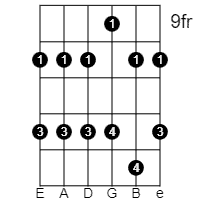
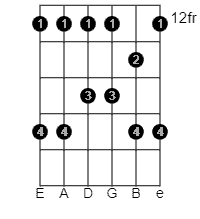

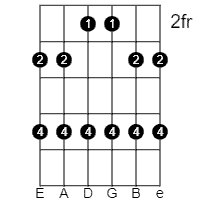
Hey! Not so fast! You said five positions and there are six diagrams!
Well, that is because the bonus track is the fifth position being played starting from the second fret, which means, beneath the first position.
This is the trick; if you pay close attention to the first diagram and the last two, you’ll see that there’s a line of dots that covers the six strings as if it was a capo or a barre.
That is going to be our pentatonic equator.
You know that, when you find it, you can rebuild the pentatonic scale toward the nut or you can construct it further toward the bridge.
Since they are consecutive, they will provide a framework with which to learn the fretboard.
Speaking of which, the pentatonic is a five-note scale, which makes it easy to memorize and play.
By knowing those five notes and the equator, you can not only learn the fretboard faster but also be a more prepared, better guitar player.
Practice routines to memorize the fretboard effectively
The tips above are just empty words if you don’t put them to practice. So, we don’t feel we’ve done our job if we don’t give you a practice guide.
If you stick to it (as a minimum, of course) you will conquer all we’ve seen in this post and you’ll become a better guitar player. Believe me, once you can recall every note in the fretboard effortlessly, you’ll be granted a plethora of other benefits we already discussed above.
We’re making a month-long practice plan and I guarantee that if you follow it closely, you’ll memorize the fretboard in that time frame.
Week 1
In week one, we’re going to tackle everything related to writing down and making memory exercises. So, these are the tips and exercises we’ll work on this week:
- Notes are an alphabet
- Note Grouping
- Learn the notes horizontally per string
- Remove flats and sharps
- Remember only the half-tone moves
All of these tips require you to make memory exercises and involve a little playing. We’re going to be changing that gradually as we get to the last week of the month.
Yet, you should follow each of these tips and write down whatever you need to before moving on.
Repeat them daily, or at least five times this week.
That visual and multi-sensorial memory will be very handy for week two.
Week 2
By week 2, we are going to assume all the writing and hard-core memorizing have been done. Now it’s time to get the guitar and start playing some of what we’ve been learning.
So, in this first week, we’re going to continue some of the exercises in week 1 and add some new ones.
This is what you should practice in week 2:
- Use the barre chord strings first
- The open position is basic
- Learn the notes horizontally per string
- Note Grouping
- Sing the Notes
- Apply to all practice routines
Follow the exercises and the tips provided in each of the subtitles given above and let the power of practice help you memorize the fretboard faster.
Again, dedicate daily time to this practice at least five times during week 2.
Once you’ve mastered these exercises, you’ll be ready to move on to week 3.
Week 3
In week 3 we’re going to add another layer to the learning which will be the structural systems we’ve seen. To practice these systems, all you need to do is play them.
Play the CAGED chords, play their notes, link them, and make music with them.
The same goes for the pentatonic scales. Play them upside down, front and back, and make them part of your vocabulary.
Once you’ve reached that place, we’re going to take it a bit further. Why? Well, because we’ll make you an amazing guitarist.
So, the next step is to work them while singing the notes and continue to practice them one string at a time, and you’ll see just how connected everything is.
So, for week 3 you need to practice these tips:
- The CAGED system
- The 5 positions of the pentatonic scale and its equator
- Note Grouping
- Sing the Notes
- Apply to all practice routines
- Learn notes horizontally per string
This mix of old and new techniques should work as a multilayered approach to your learning.
Keep the practice up and give these tips at least a week of daily work.
Week 4
This final week of your training will be dedicated to doing the hardcore practice of the final stage. Yes, we are going to go again through the systems, we’ll add the octaves, and we’ll continue to sing the notes.
This should feel more like a continuation of the previous week than a new challenge. Furthermore, you can think of this week as a solidification of all you’ve learned so far.
So, these are the tips for this week:
- Use the octaves
- Sing the notes
- Apply to all practice routines
- The CAGED System
- The Pentatonic scale and the pentatonic equator
If, by the end of this week, you don’t know the fretboard by heart, repeat the same structure for an additional month and give it another try.
The Bottom Line
Knowing the fretboard by heart is a great first step toward becoming a better guitar player.
The 12 tips in this article might hopefully open up the gate to enter a whole new universe of guitar playing in which everything is connected.
Furthermore, understanding these relationships will make you a better songwriter, soloist, and jam player.
So, take a month of your life to learn the tips following our calendar and use our experience and knowledge as a key to unlock the next level of your playing.
Have fun and happy playing!

Hello there, my name is Ramiro and I’ve been playing guitar for almost 20 years. I’m obsessed with everything gear-related and I thought it might be worth sharing it. From guitars, pedals, amps, and synths to studio gear and production tips, I hope you find what I post here useful, and I’ll try my best to keep it entertaining also.

